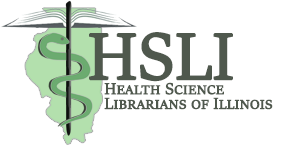(via Andrea Pritt, Penn State Harrisburg)
Please join the ACRL STS (Science & Technology Section) Government Information Committee on Wednesday, June 14, at 2:00 PM CDT, for our virtual Annual Update! Speakers Alessandra Zimmermann and Meagan Phelan, both from the American Association for the Advancement of Science (AAAS), will present, “AAAS & the Science Family Journals: Advocating for Government Budget Transparency in S&T and Open Science to Support Reproducibility”. See the detailed description below. Registration for the event is open now and the event will be recorded for later viewing.
“AAAS & the Science Family Journals: Advocating for Government Budget Transparency in S&T and Open Science to Support Reproducibility”
AAAS and the Science family of journals are both invested in open data, though they interact with it as different sides of the same coin. Open data refers to the practice of authors making the data and code on which their conclusions rest permanently and publicly available. It is commonly discussed in the context of reproducibility of individual studies by independent experts, but it also allows others – including the public and policymakers – to transparently assess the evidence base for a conclusion.
On the AAAS side, the R&D Budget and Policy Program acts as a translator and curator of information on federal spending on research and development, digesting dense legal text to extract the relevant numbers and contexts. These are disseminated in publicly accessible dashboards and reports that aim to make the U.S. budget and its process more accessible to the public at large. The program also compiles historical datasets, updated every year with the latest data, so that the individuals can download and use them in their work. This includes other public policy professionals advocating for science funding, but is also a repository utilized by researchers, reporters, and foreign governments.
Science has been a pioneer in open data standards development and implementation, leading the way in making open data a mainstream practice at journals. As part of this history, in 2014, Science‘s editor-in-chief Marcia McNutt convened a workshop of experts to develop author guidelines for journals around openness, resulting in creation of the Transparency and Openness Promotion (“TOP”) guidelines, which were published in Science in 2015. Today, more than 5,000 journals are signatories of TOP. While Science had previously required all data underlying a study to be available, implementation of TOP at Science meant authors could no longer provide data only upon request; they had to provide or deposit it in a repository at publication.
Today, Science, in close collaboration with other scientific societies, remains dedicated to working with the community to move the open data initiative forward, including by fostering use of an array of reliable repositories. Earlier this year, for example, the Science family journals announced a partnership with the nonprofit data repository Dryad. Implementing and maintaining an open data system requires Science editors to discuss data release with authors for every paper prior to acceptance. Science actively engages with the community to address obstacles – including discipline-specific obstacles – around making data open.
